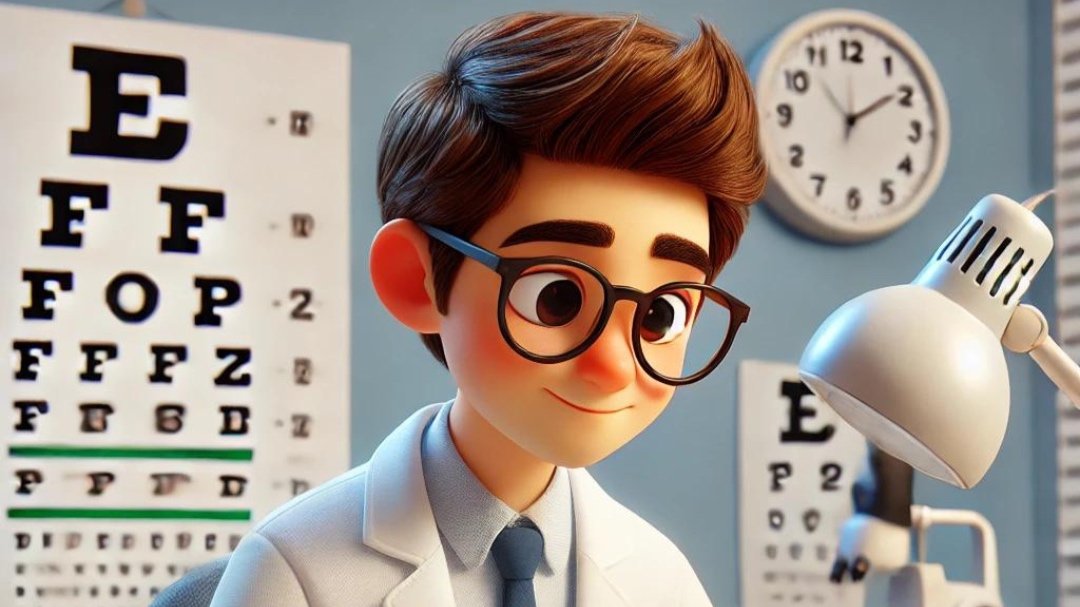
Glossary of
Sports Vision Terms
-
The ability of the eye to change its focus from distant to near objects (and vice versa). This process is achieved by the lens changing its shape.
-
An eye examination procedure to assess for the presence and measure the extent of strabismus (eye misalignment) by covering each eye alternately to observe the uncovered eye's movement.
-
The ability to maintain equilibrium and control body position during movement, crucial for athletic performance.
-
Pigments found in plants and other photosynthetic organisms, some of which (like lutein and zeaxanthin) are known to benefit eye health.
-
The speed at which an individual responds to a stimulus when multiple stimuli and responses are possible.
-
The mental effort required to process information and perform tasks, which can be influenced by visual stimuli in athletics.
-
A quick and basic evaluation of a patient's field of vision where the examiner compares the patient's visual field to their own.
-
The ability of the eye to distinguish objects from their background or a change in brightness.
-
The ability to judge the distance of objects and spatial relationships in three dimensions.
-
A test that measures automatic eye movements, which are crucial for reading skills.
-
The pathway in the brain that processes spatial relationships and movements of objects, often referred to as the "where" pathway.
-
A set of higher-order cognitive processes including problem-solving, planning, and self-regulation, crucial for decision-making in athletics.
-
The muscles that control eye movement and are crucial for maintaining binocular vision.
-
The coordinated control of eye movement with hand movement and the processing of visual input to guide reaching and grasping.
-
Coordination of small muscles, particularly in the hands and fingers, with the eyes to perform precise actions.
-
A brain region involved in high-level visual processing and recognition, such as facial recognition and reading.
-
Coordination of large muscles for movement, typically associated with whole-body movement.
-
The measurement of the eyes' ability to turn inward while focusing on a near object as it moves vertically downward.
-
The ability to suppress prepotent responses, crucial for disciplined action in sports.
-
A relay center in the thalamus for the visual pathway, critical for processing visual information before it reaches the visual cortex.
-
The ability to perceive the movement of objects and individuals in the visual field.
-
The cognitive and perceptual skill of simultaneously tracking several moving objects in a dynamic scene.
-
The ability to change focus from near to far objects quickly and accurately.
-
The ability of the eyes to turn outward to regain single binocular vision.
-
The use of various techniques to either directly or indirectly image the structure, function, or pharmacology of the nervous system, useful in assessing and training visual and motor skills.
-
The region of the brain responsible for processing visual information.
-
The ability to understand one's position and direction in space, crucial for movement and strategy in sports.
-
A region of the brain involved in processing sensory information, spatial orientation, and coordinating motor movements.
-
The range of visual information an individual can recognize without moving their eyes, crucial for scanning and reacting in sports.
-
The ability of the eyes to turn inward to regain single binocular vision.
-
The measurement of the eyes' ability to turn inward while focusing on a near object as it moves from distance to near.
-
The initial cortical region for processing visual information, crucial for visual perception in athletics.
-
The speed at which an individual responds to a stimulus.
-
The speed at which an individual can process visual information, crucial for reaction time and decision-making in sports.
-
A network of neurons in the brain that promotes arousal and attentiveness, influencing an athlete’s level of consciousness and alertness.
-
The spatial organization of visual information as it's processed in the brain, crucial for accurate visual perception.
-
The system that controls quick, simultaneous movements of both eyes between two or more phases of fixation, crucial for scanning the environment in sports.
-
The system that allows the eyes to smoothly pursue moving objects in the visual field.
-
The ability to understand one’s position and the positions of objects and individuals in space.
-
The phenomenon where the reaction time linearly increases with the amount of information that needs to be processed.
-
A demonstration of cognitive interference where a delay in the reaction time of a task occurs when the processing of conflicting information is involved.
-
The measurement of the eyes' ability to turn inward while focusing on a near object as it moves vertically upward.
-
An eye examination procedure to assess for strabismus or heterophoria by covering one eye and observing the other eye's movement.
-
The pathway in the brain that processes object characteristics like shape and color, often referred to as the "what" pathway.
-
The movement of both eyes to maintain binocular vision, crucial for depth perception in athletics.
-
The ability to selectively process visual information while ignoring other perceivable information.
-
The coordination of visual perception with motor action, crucial for eye-hand coordination and other visually guided movements in sports.
-
The ability to coordinate visual information with motor output.
